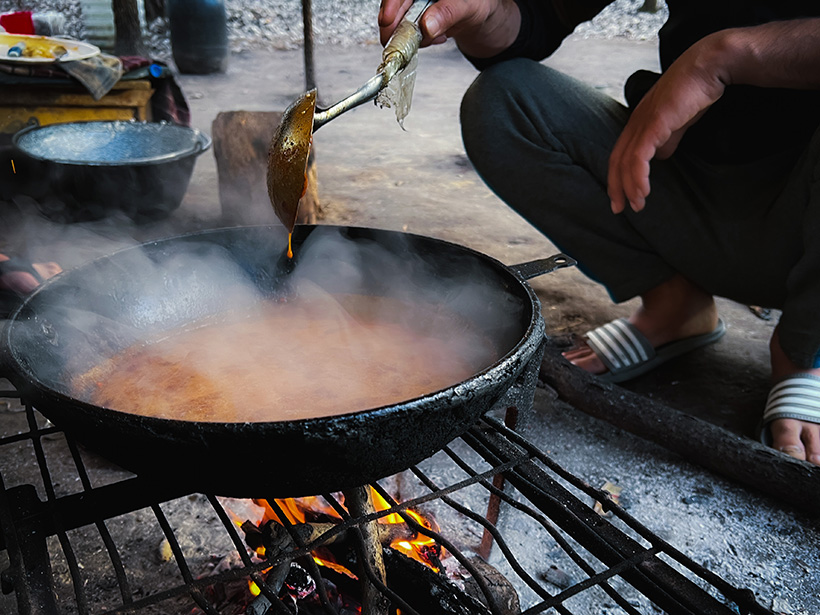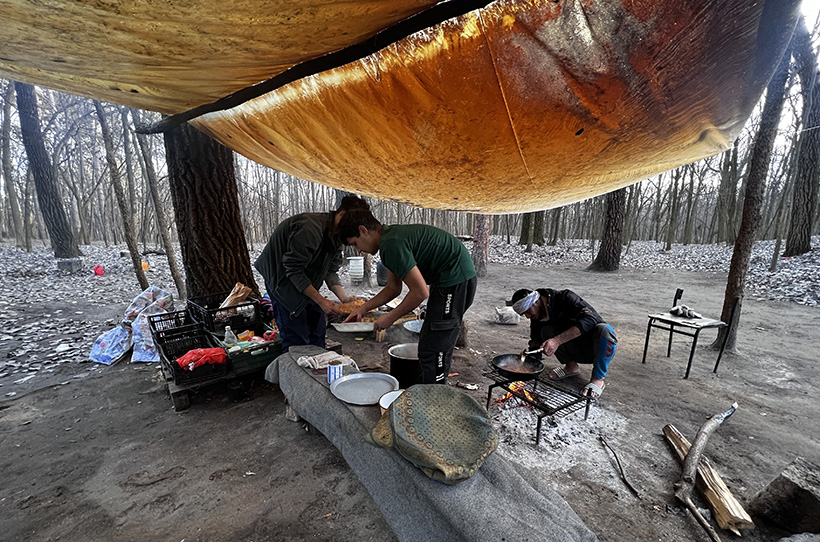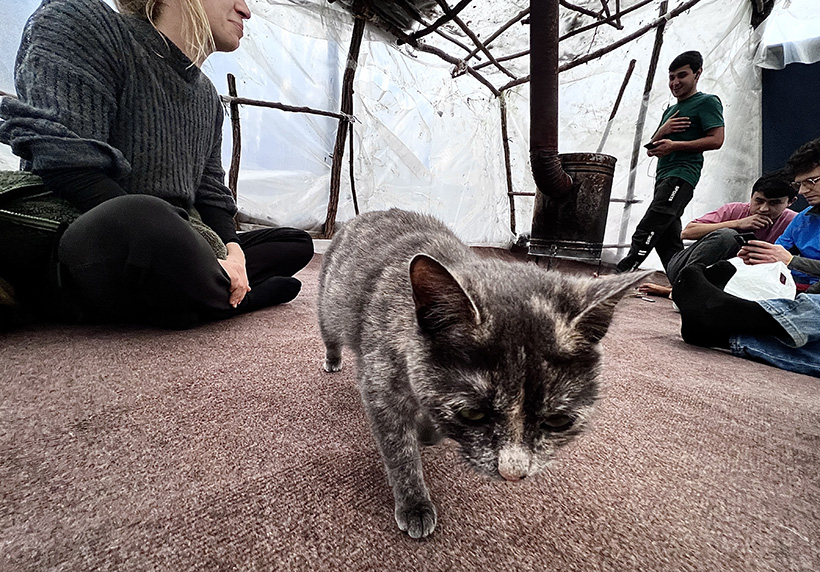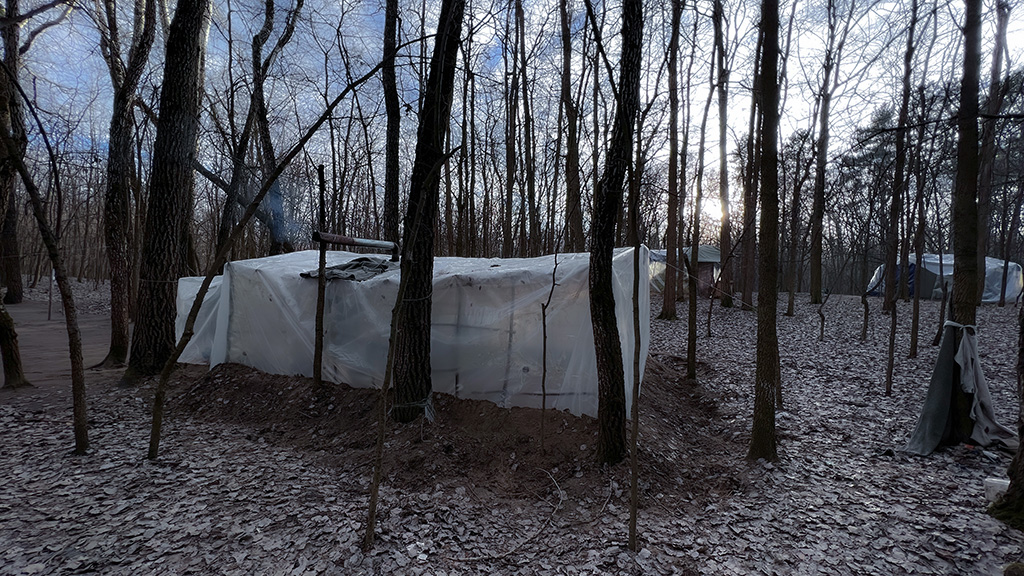The “Balkan Route” opened in 2015 when thousands of refugees travelled through the Western Balkan states from Greece to reach the EU. In an unprecedented flight they crossed Macedonia, Serbia, Hungary and Croatia until the borders were closed in spring of 2016 when the agreement between the EU and Turkey was signed. The old Balkan Route was effectively sealed, and the number of people travelling decreased significantly. However, to this day, some refugees and migrants still manage to cross into Europe, resorting to increasingly dangerous and hidden routes to avoid encountering Croatian and Hungarian border police.
In the Balkans, thousands of refugees are trapped in Serbia, which has four borders with the EU and four borders with countries that belonged to the former Yugoslavia. To get there, people crossed Greece and Macedonia from Turkey. They have travelled thousands of kilometres, sometimes on foot in the middle of the night and in sub-zero temperatures. Since 2010, people fleeing the wars in Afghanistan, Syria and Iraq have been arriving in the Serbian forests.
Thousands of young people in Pakistan, too, are forced to leave their homes in search of a safe and dignified life due to the strong pressure and violence of the Taliban.
 Photo by Antonio Sempere
Photo by Antonio Sempere
As of the end of September last year, there were at least 10,000 refugees in Serbia, where there are a maximum of 6,000 accommodation places in 17 different locations. We are registering a very difficult situation in Subotica (a town near the Hungarian border), where there is a danger of a humanitarian crisis if we do not increase the accommodation capacity,” said the same source, who pointed out that there are also problems in Preservo, in the south of the country, and in Sombor, in the north, where more than 600 people are sleeping on the outskirts of the reception camp.
Thousands of people have entered the Balkan country mainly from North Macedonia, Kosovo and Bulgaria. Serbia’s cold forests are full of these people who find their way blocked by dangerous fences that leave hundreds of people trapped behind them under the icy punishment of winter. The “jungle”, as they call the deep places where they live, is a backwater where the rest of the world forgets the human tragedy of the refugees who cling to the hope that they can escape the pressure of the border guards and one day cross to the other side.
In Serbia, many NGOs are working to show the rest of the world the effects of the European Union’s migration policies on refugees at its external borders. One of these organisations is the Spanish No Name Kitchen, established in the Balkan country in the winter of 2017 when they began to distribute food rations to thousands of people who were crammed into abandoned barracks in Belgrade. Since then, they have continued their work in various locations in Serbia and Bosnia. Their actions to monitor the violence that police officers in these countries exercise against migrants, together with other organisations, have been collected in reports based on the testimonies of people who have suffered some kind of abuse during their migratory journey in the Balkans, which have been submitted to the highest bodies and committees for human rights of European organisations, such as the Council of Europe and the United Nations.
 Photo by Antonio Sempere
Photo by Antonio Sempere
Many hours of walking in the cold night, hiding in the trees, and passing between the guard posts without being discovered. This is the only way to find a better future, a place where they feel safe after having left their homes in countries plagued by war, famine, and persecution for political, religious or ethnic reasons, or just to seek the life that every human being deserves for a better future, yet they often find themselves trapped in circles of violence, poverty and discrimination, unfortunately without any access to basic resources.
These people survive thanks to the help of organisations that provide them with the minimum necessary to keep them from starving or freezing to death. Despite the efforts of volunteers to provide the necessary resources for them, they continue to face deplorable living conditions. On the last day of the year, in a camp inside the forest, four young Afghans were preparing food cooked over a wood fire, oblivious to the New Year celebrations a few hours after. The young men know that soon the place where they live will be a very difficult place to make a living. The winter snows will make the access roads to the forest impassable and it will be mission impossible for organisations like No Name Kitchen to bring help there. The NGO, with half a dozen volunteers in Subotica, offers showers, clothes, food and moral support in the various makeshift camps where refugees wait for the chance to cross. The migrants know that it will be better to try to get into a camp where they can at least occupy a heated cabin until the winter is over. They also know that it is very difficult to try to make the “game” for it to make it over the fences to Hungary. The “game” is what they call the attempt to jump the barbed wire fences that Hungary built in 2015 and that separate the 175 kilometres of border with Serbia.
To make matters worse, many of the migrants also face violence and abuse from border guards. In addition, they have no access to legal recourse and are therefore unable to assert their rights. These situations of abuse and violence are often ignored by government authorities, who deny them access to medical assistance. It is important to have in mind that the situation of these people is not only a humanitarian problem but also a political one.
 Photo by Antonio Sempere
Photo by Antonio Sempere
Refugees living in hiding in the forests near the Hungarian border in the north try to cross the dreaded fences that Hungary installed with the help of the European Union. These wire walls bear witness to the violence of the Hungarian border police against people trying to reach the other side. The Magyar country’s new law makes it a crime to break the razor-wire fence at the border and extends prison sentences for people smugglers. The Hungarian government closed two border crossings with Serbia in 2015.
Others opt to try to cross the Croatian border in the west to try to reach Italy.
In the Sid, Tabankut or Subotica camps in the north of the country, hundreds of young people, many of whom have not even reached the age of majority, from Afghanistan, Pakistan, Bangladesh, Morocco and Africans from Eritrea, South Sudan and Somalia, who have managed to reach Serbia, report beatings and torture by security agents at border crossings. It is difficult to work, volunteering in Serbia, under constant pressure and intimidation in a country where humanitarian aid is criminalised, hot food cannot be served and basic medicines cannot be dispensed if you are not a Serbian doctor. The Serbian government does not provide any assistance in these locations and it has to be NGOs that provide food and support to the refugees. Volunteers from many countries risk being expelled from Serbia for trying to help.
 Photo by Antonio Sempere
Photo by Antonio Sempere
The Serbian government, with funding from the European Union through the Serbian Commissariat for Refugees, is in charge of managing the 17 refugee camps scattered across Serbia. Some of these are closed centres where people are admitted who, as their asylum applications are not viable, are waiting to be expelled from Serbia, a situation that does not occur due to a lack of resources and which forces an indeterminate number of them to wander the streets of towns and cities with the sole remedy of begging to survive. In other cases, many of those who have left these centres try to cross borders to reach Hungary or Croatia, but not before waiting for their chance to hide in the woods. “Many of them come back from Hungary badly injured and have no one to look after them. There are many families who have not eaten for two days. The situation is serious. I don’t know what is going to happen to so many people here, but if this continues, we will have to lament some misfortune because there is no guaranteed care for some cases that need medical attention” confesses a young Serbian woman who collaborates with a religious organisation that is notably affected by what she is living through.
The cold forests of Serbia, one of the most inhospitable places in the world, have long been home to these people, hardly a place to seek refuge from loneliness. In a world that closes its door on them and turns its back on them, they reread their dreams and raise their consciousness in the icy, and dehumanised, dense jungle, far from the civilisation that witnesses a human tragedy. These conditions highlight the resilience of human beings, even in the most difficult conditions, willing to gamble on sacrifice while not losing hope for a better life.
 Photo by Antonio Sempere
Photo by Antonio Sempere










